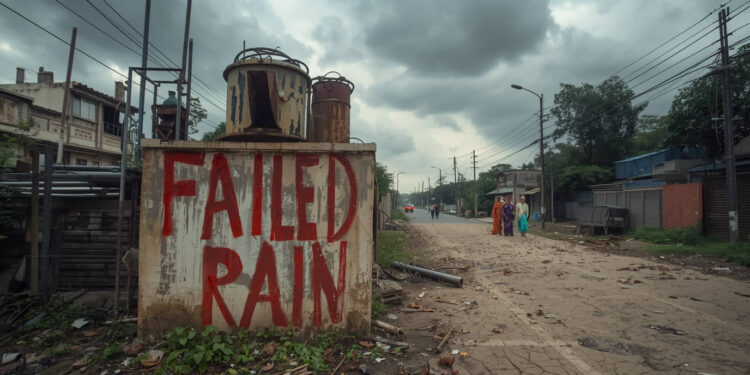The Delhi government’s attempt to artificially induce rain through a Rs 3.2 crore cloud-seeding program has failed to yield rain, even after multiple trials carried out towards the end of 2025, according to reports. The experiment, in collaboration with IIT Kanpur, used aircraft to disperse silver iodide flares over northwest Delhi and its border areas with the National Capital Region (NCR). But experts and meteorological evidence cited a lack of moisture in the clouds as the overarching explanation for the experiments’ failure.
Experiment Details and Costs
The Government decided to conduct five cloud seeding trials, for which the cost is expected to be Rs 3.21 crore, at an average of about Rs 64 lakh per trial. Two sorties on October 28 itself cost more than Rs 1 crore. For the trials, the Cessna aircraft released 16 packets of agents made from silver iodide and sodium chloride over spots including Burari, Mayur Vihar, Karol Bagh, and parts of nearby regions like Noida and Greater Noida.
Why No Rain Occurred
Commenting on the cloud seeding that failed to bring rain, experts and the Indian Meteorological Department (IMD) gave numerous scientific and environmental reasons why it wasn’t successful:
- Dry Conditions: The seeded clouds had only 10% to 20% moisture, compared with the requisite level of more than 40%. It is not possible to produce rain from dry (or marginally moist) clouds by seeding. Still, one can only expect precipitation of the order of 15-30 minutes earlier than normal out of rain-bearing clouds.
- Lack of Rain-Bearing Clouds: The Met Office also confirmed that there were no Western Disturbances—rain-bearing systems that fall in “winter” areas—bringing showers to Delhi during winter. Some of the city’s clouds were higher —cirrus clouds, not conducive to seeding or producing rain.
- Weather Conditions – The tests were postponed several times due to monsoon rains and prevailing weather patterns, and the trials were conducted in normally dry conditions that were not conducive to sustained cloud formation.
Impact on Air Pollution and Expert Opinions
While no rain was in evidence, Delhi’s regional Government reported slight but brief drops in particulate matter (PM 2.5 and PM 10) in seeded areas after the trials — about a 10 percent drop — an effect that experts said was marginal and ephemeral. Many environmentalists and atmospheric scientists condemned the move as an expensive and impractical quick fix that fails to address the underlying causes of air pollution, including vehicle exhaust and industrial waste. They stressed that cloud seeding is something of a stopgap rather than a lasting fix.
What Lies Ahead
The IIT Kanpur team and the Delhi government said the attempts could be made at a later stage with more favourable conditions. But they warn that cloud seeding is not a sure-shot measure to bring rain and should be considered as a complementary, rather than a standalone, option for combating pollution. Weather experts warned the public and policymakers to temper their hopes, noting that cloud seeding cannot make it rain in any old cloud; it can only prompt earlier rains from already moisture-rich clouds.


